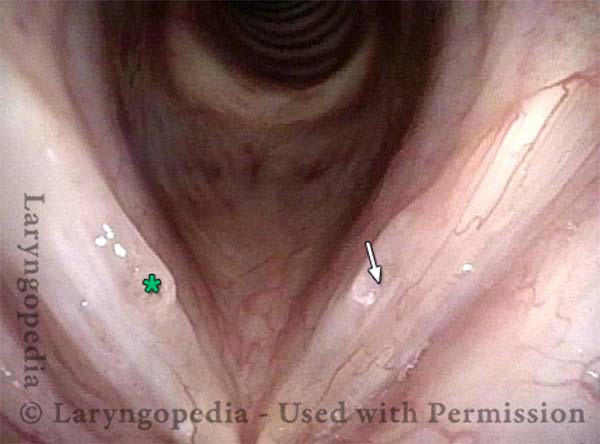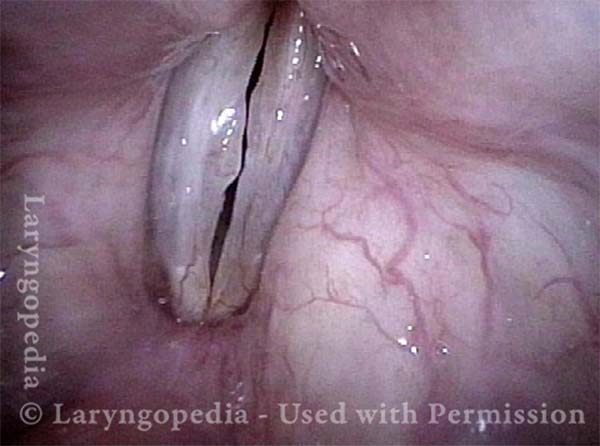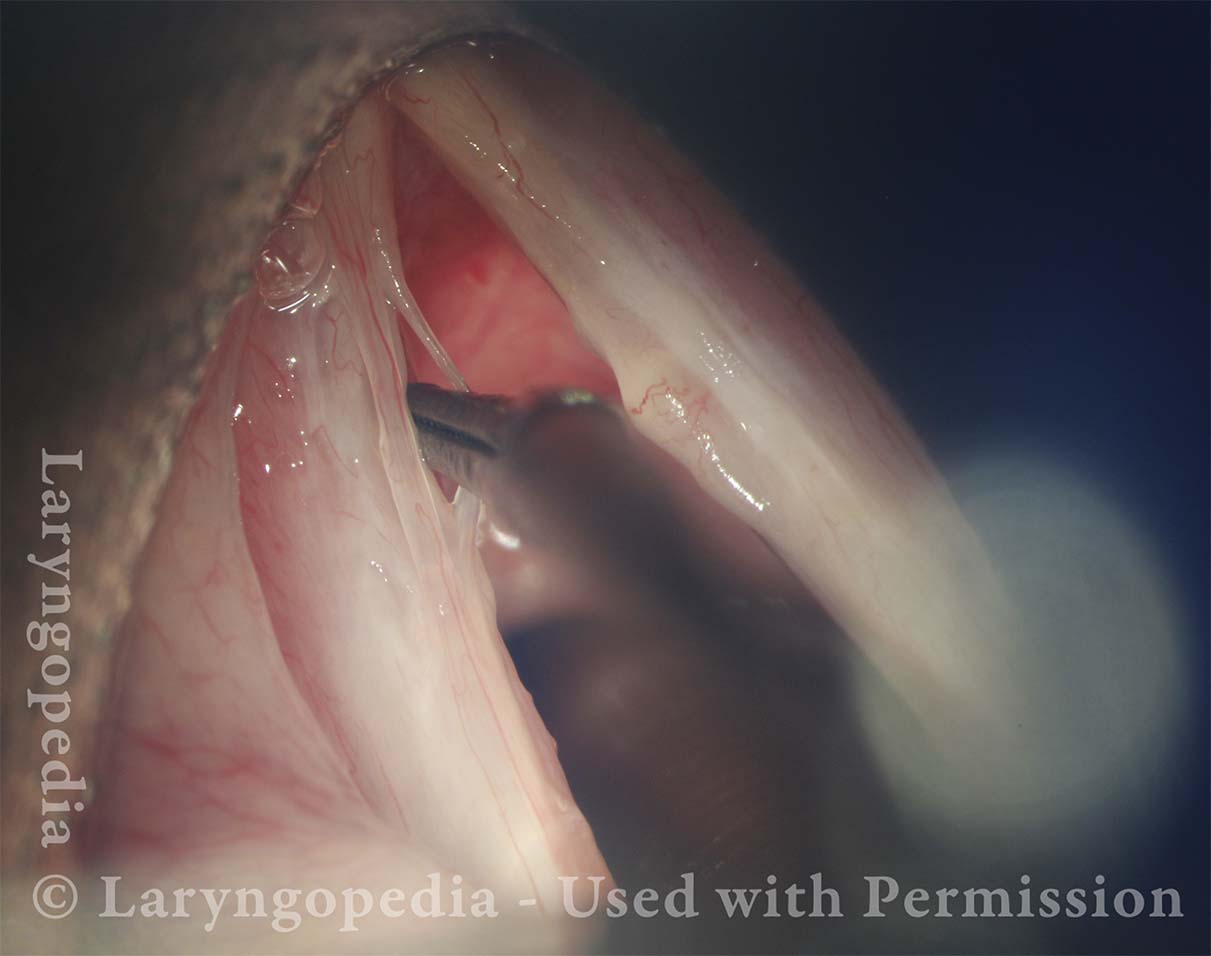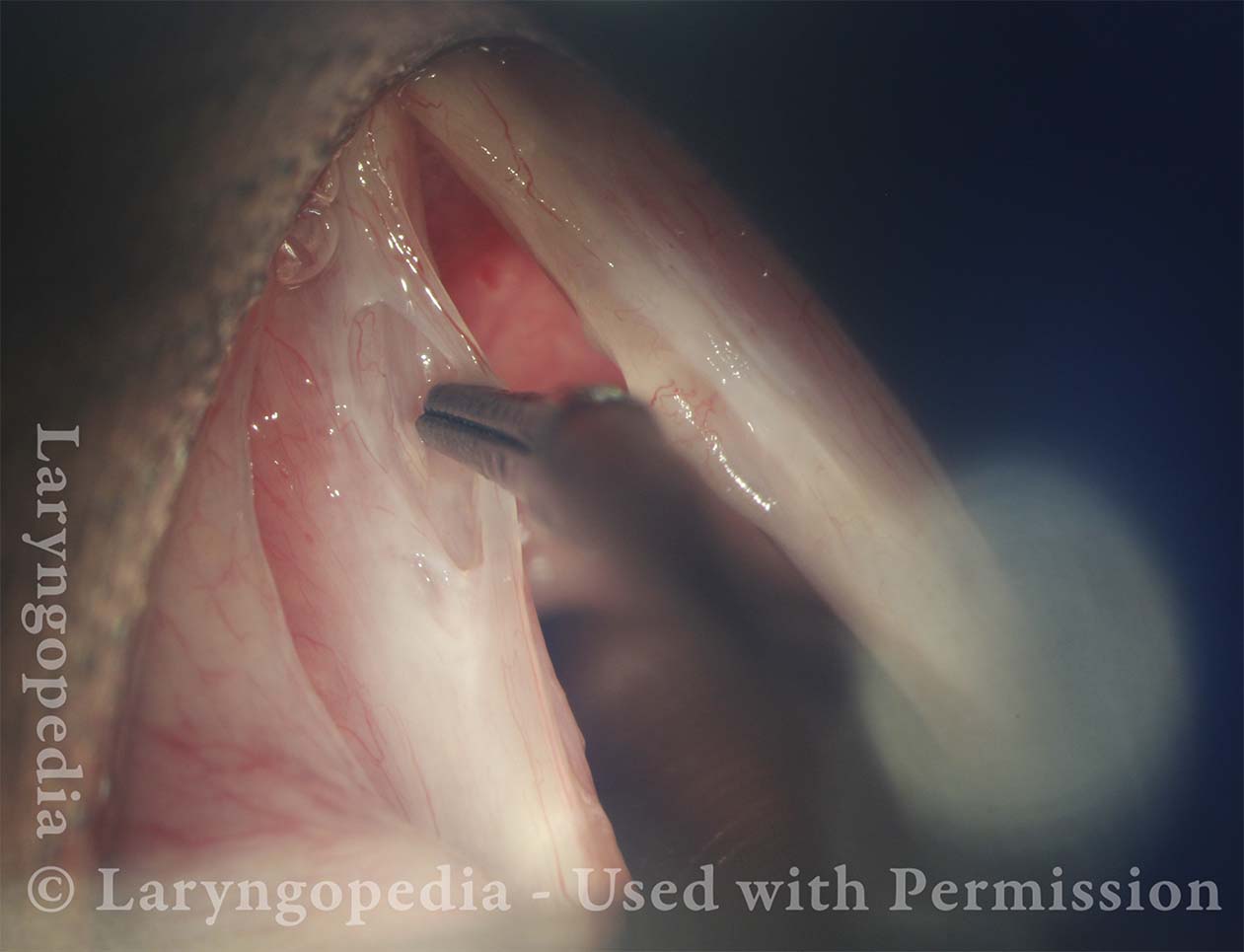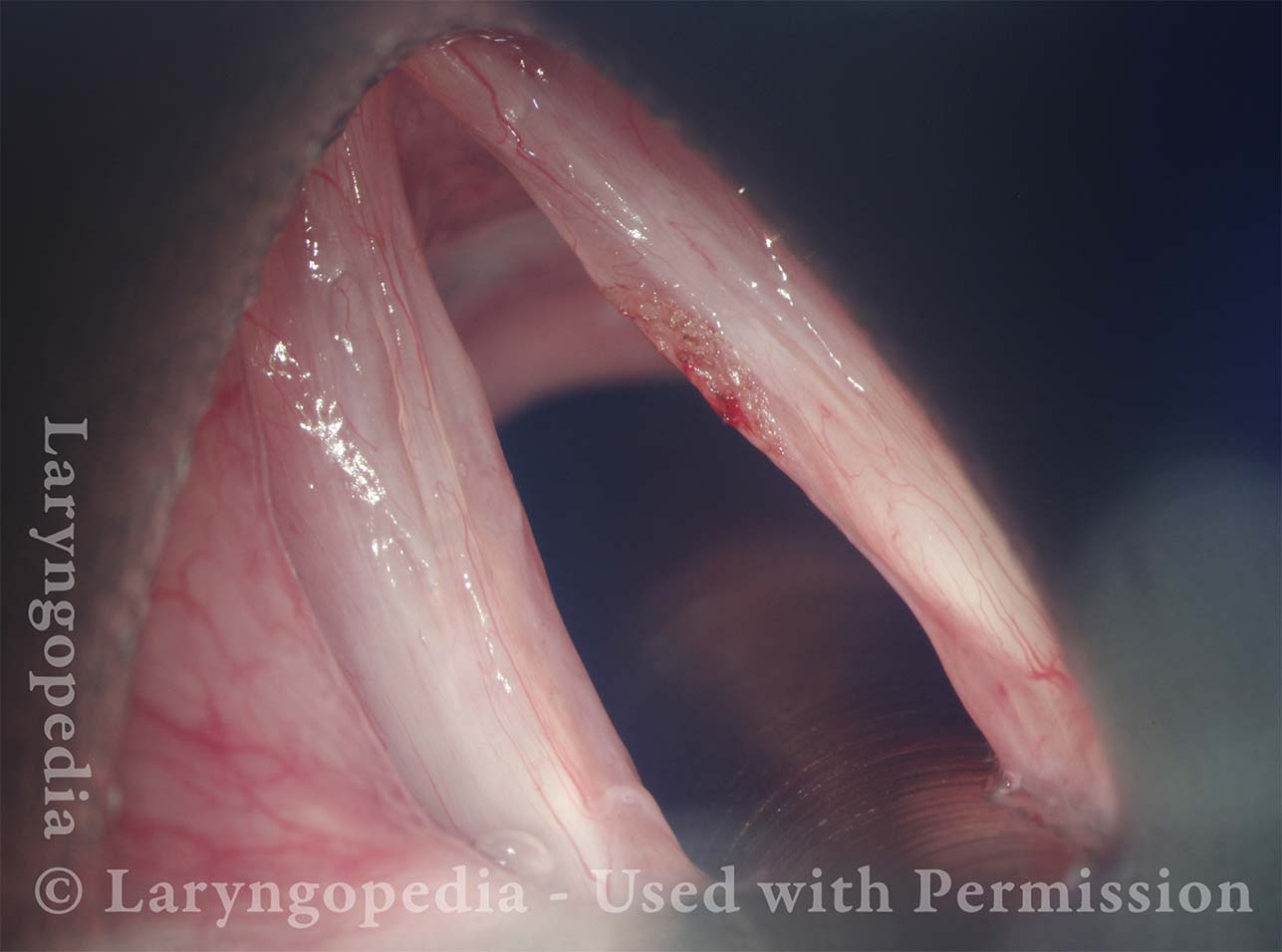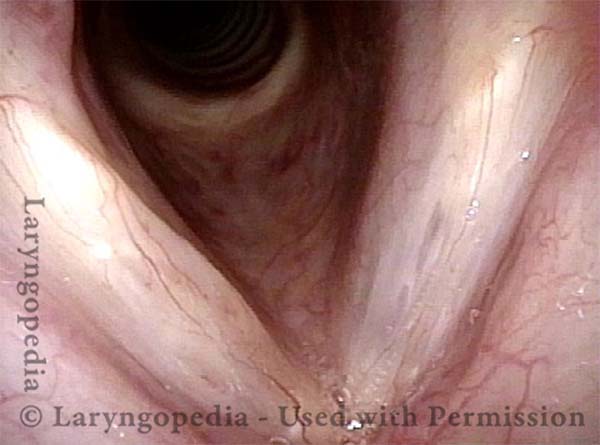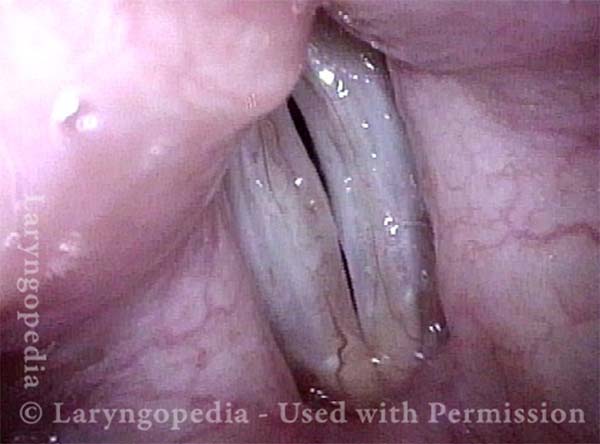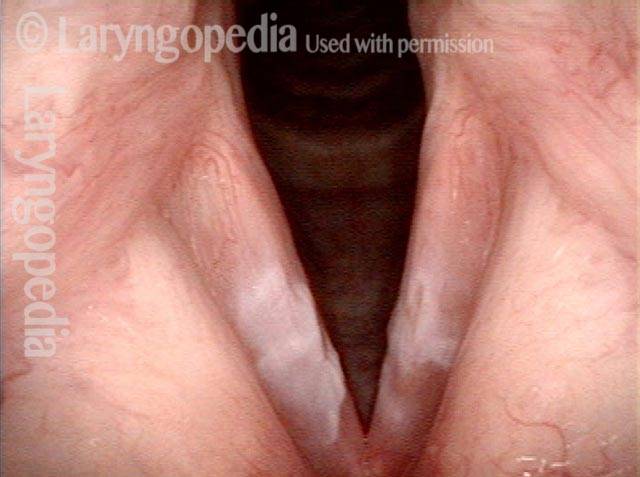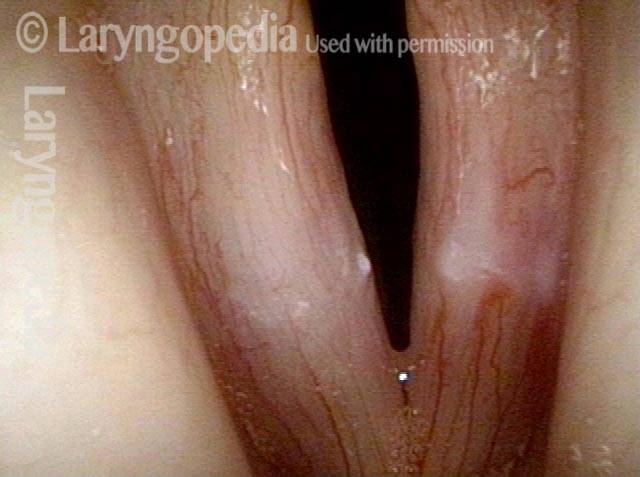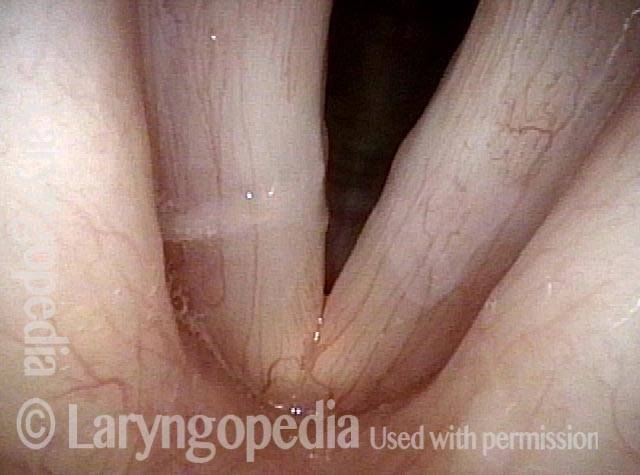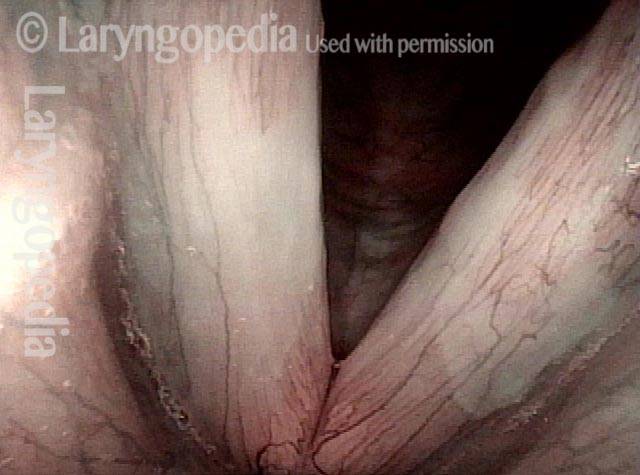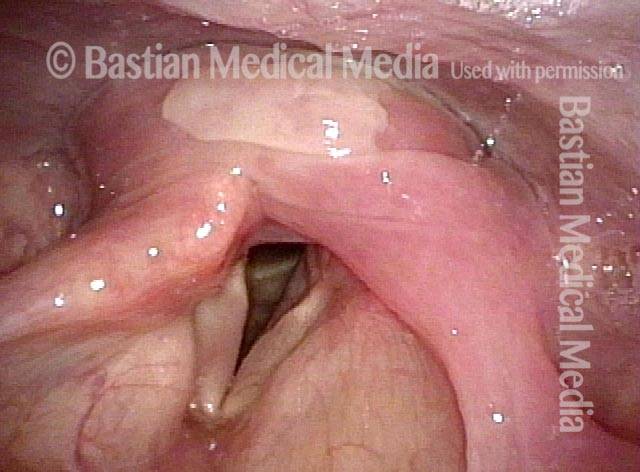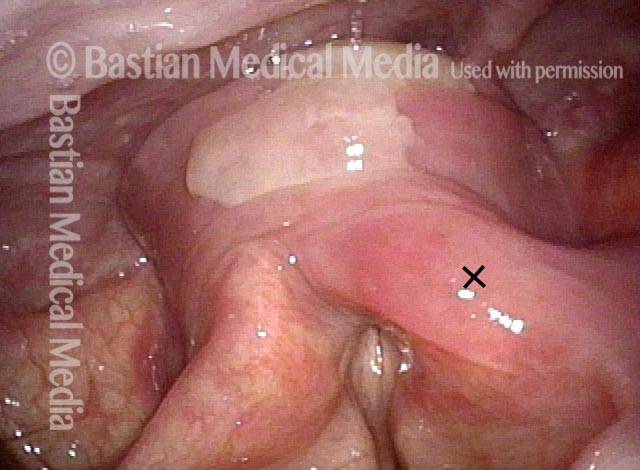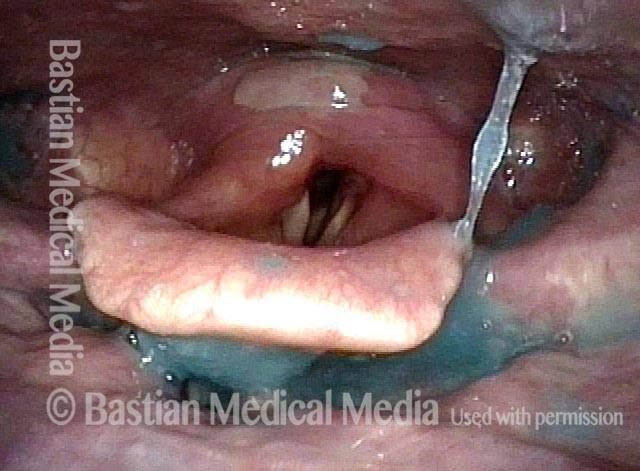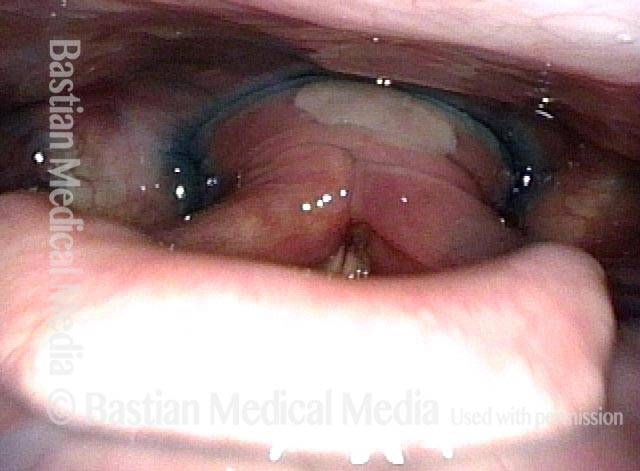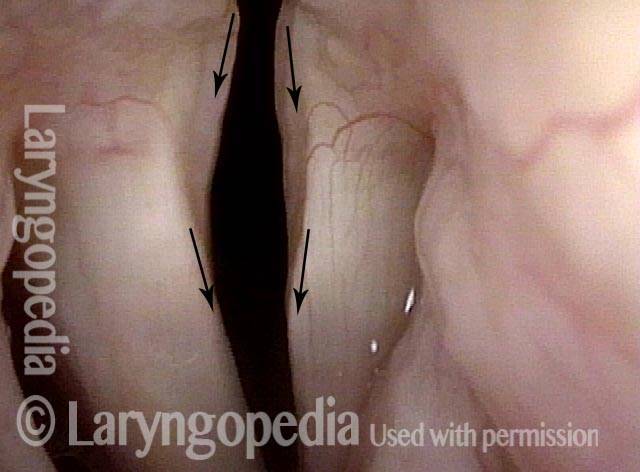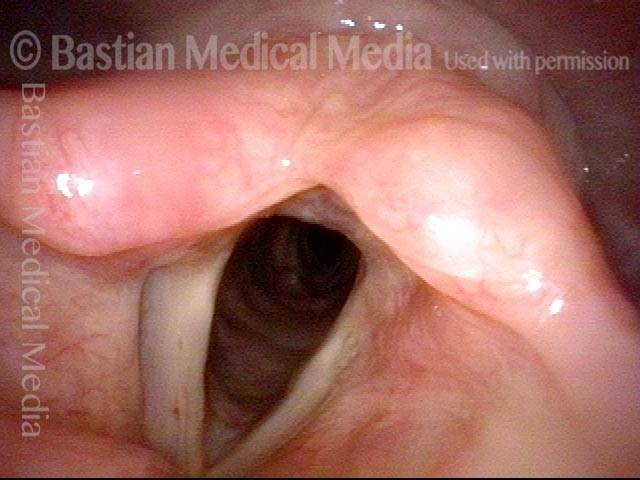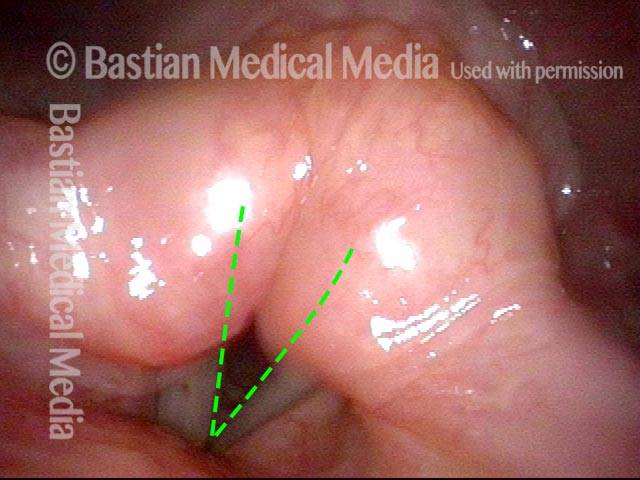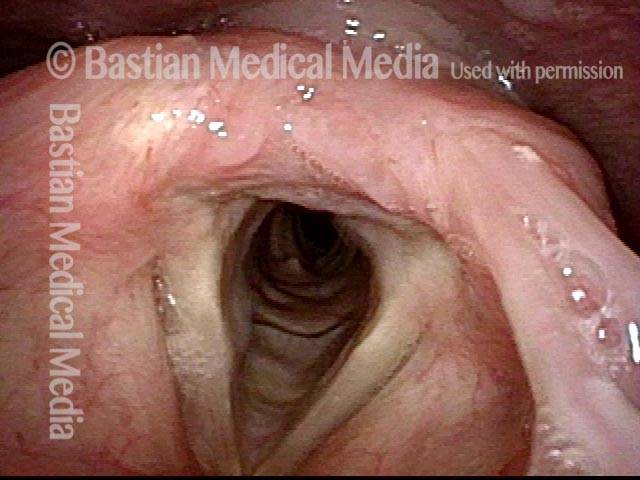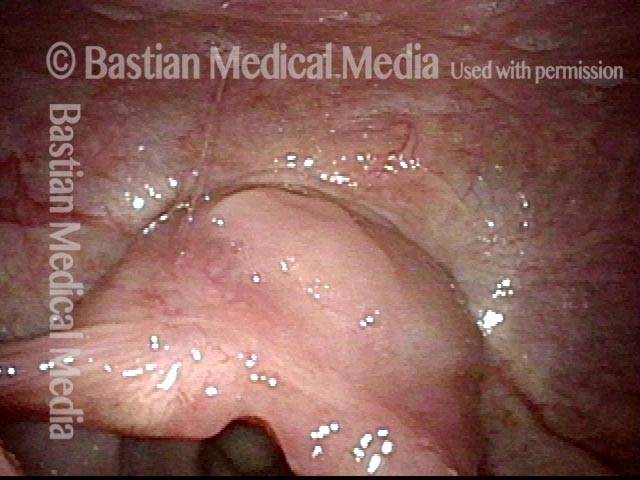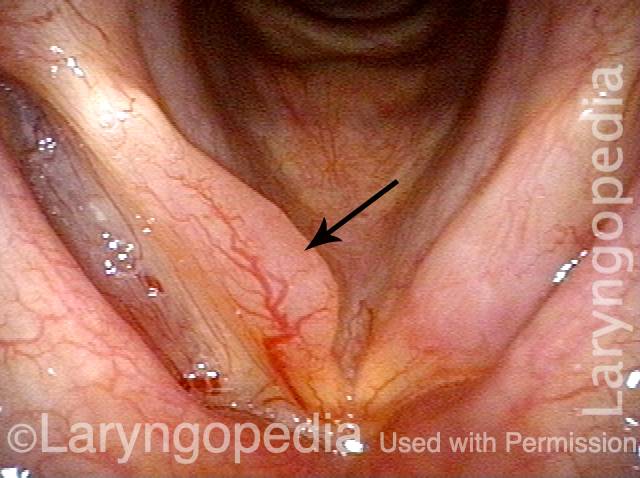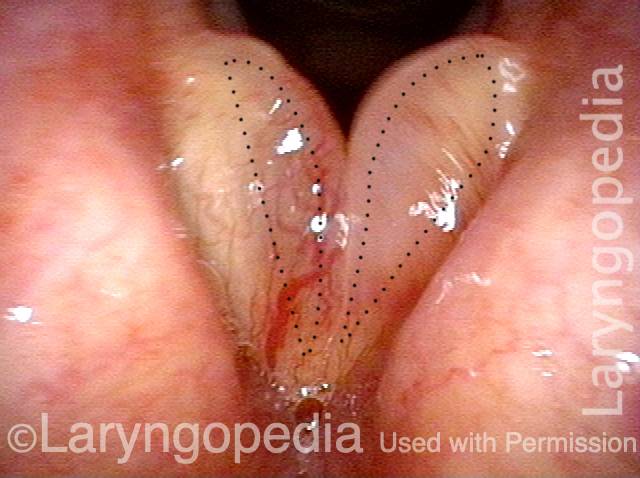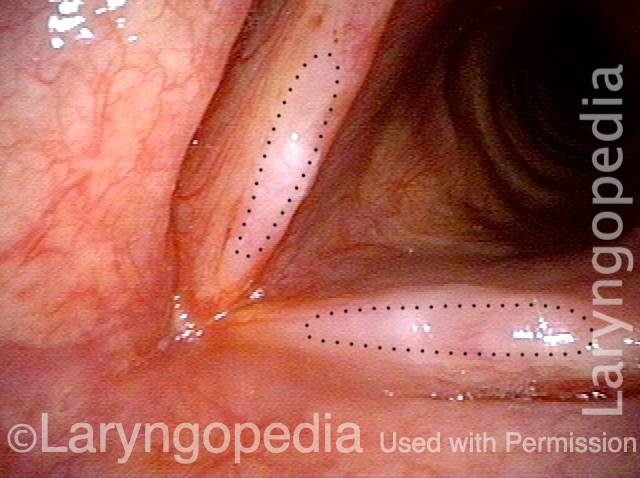Mucosa
The mucous membranes (or mucosa) are to our interior as skin is to our exterior. Mucosa covers or lines various body cavities and internal organs. In laryngology, the mucosa of the vocal cords is the point of main susceptibility to vibration-induced traumatic abnormalities such as nodules, polyps, capillary ectasia, and so forth. Mucosa also lines the nose, mouth, pharynx, esophagus, and tracheobronchial tree.
 Not Just a Sulcus—Classic Mucosal Bridges
Not Just a Sulcus—Classic Mucosal Bridges
This 46-year-old woman is an intense, dynamic teacher with children still at home. She describes herself as highly sociable. In fact, on the 7-point talkativeness and loudness scales, she self-describes herself as a “7” and “6”—fitting a classic “vocal overdoer” profile.”
She has been chronically hoarse for several years. The examination showed what was initially expected to be a glottic sulcus. After becoming much more hoarse, she returned 3 years later, at which time a margin swelling was also found on the right vocal cord.
At the time of surgery, an extremely good example of not just one, but two mucosal bridges is found, overlying a deep sulcus. There is usually no benefit from removing a mucosal bridge, and so the surgery was limited to the polypoid lesion.
Postoperatively, even with the mucosal bridge untouched, she found her voice to be much improved.
Polypoid lesion + sulcus (1 of 9)
Polypoid lesion + sulcus (1 of 9)
Margin divot (2 of 9)
Margin divot (2 of 9)
Surgical view (3 of 9)
Surgical view (3 of 9)
Streching the mucosal bridge (4 of 9)
Streching the mucosal bridge (4 of 9)
Lifting the mucosal bridge (5 of 9)
Lifting the mucosal bridge (5 of 9)
Sulcus beneath mucosal bridges (6 of 9)
Sulcus beneath mucosal bridges (6 of 9)
Polyp removed (7 of 9)
Polyp removed (7 of 9)
Postoperative view (8 of 9)
Postoperative view (8 of 9)
Voice restored (9 of 9)
Voice restored (9 of 9)
Healed Mucosa After Ulcerative Laryngitis
Ulcerative laryngitis (1 of 4)
Ulcerative laryngitis (1 of 4)
Six weeks later (2 of 4)
Six weeks later (2 of 4)
7 years later (3 of 4)
7 years later (3 of 4)
Narrow band lighting (4 of 4)
Narrow band lighting (4 of 4)
Pills can get Stuck and Burn
Superficial ulceration (1 of 4)
Superficial ulceration (1 of 4)
Inflamed pyriform (2 of 4)
Inflamed pyriform (2 of 4)
Oropharyngeal dysphagia (3 of 4)
Oropharyngeal dysphagia (3 of 4)
Hypopharyngeal crescent (4 of 4)
Hypopharyngeal crescent (4 of 4)
Classic TA + LCA-only Paresis, Right Vocal Cord
Atrophy of the conus (1 of 5)
Atrophy of the conus (1 of 5)
Inability to adduct (2 of 5)
Inability to adduct (2 of 5)
LCA weakness (3 of 5)
LCA weakness (3 of 5)
Further review (4 of 5)
Further review (4 of 5)
Luffing (5 of 5)
Luffing (5 of 5)
Redundant Supraglottic Mucosa, before and after Surgery
Redundant supraglottic mucosa (1 of 8)
Redundant supraglottic mucosa (1 of 8)
Supraglottic tissue (2 of 8)
Supraglottic tissue (2 of 8)
Vibrating mucosal margin (3 of 8)
Vibrating mucosal margin (3 of 8)
1 week after surgery (4 of 8)
1 week after surgery (4 of 8)
1 week after surgery (5 of 8)
1 week after surgery (5 of 8)
1 week after surgery (6 of 8)
1 week after surgery (6 of 8)
7 weeks after surgery (7 of 8)
7 weeks after surgery (7 of 8)
7 weeks after surgery (8 of 8)
7 weeks after surgery (8 of 8)
Smoker’s Polyp Reduction Improves Voice Even Though the Larynx Result May not be “Pretty”
Smokers Polyp (1 of 5)
Smokers Polyp (1 of 5)
Reine’s edema (2 of 5)
Reine’s edema (2 of 5)
A week after surgery (3 of 5)
A week after surgery (3 of 5)
Residual Reinke’s edema (4 of 5)
Residual Reinke’s edema (4 of 5)
Residual submucosal edema (5 of 5)
Residual submucosal edema (5 of 5)
Share this article
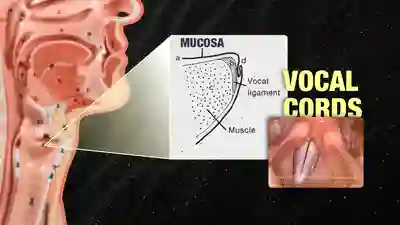
5 Symptoms of Vocal Cord Mucosal Injury
Singers or others who have injured the mucosa—surface layer—of their vocal cords may have normal-sounding speaking voices and at the same time, singing voice frustrations.
This video explains the 5 most common symptoms of injury, and Dr. Bastian’s prior video on vocal cord swelling checks can help the singer know when to begin thinking “my problem may be injury, and not acid reflux or a technical deficit.”
